Out, Damned Dark Spots
News flash: so many hyperpigmentation treatments don't work. Here's how I finally faded my dark spots and melasma
Hi new readers! This is a new weekly beauty newsletter from the former Editor in Chief of Allure—if you like what you see, hit the subscribe button to get access every week. Thanks for your support!
For years, hyperpigmentation has been my number one skin issue. Apparently, I’m not the only one. When I ran a poll of future topics to cover, dark spots won by a huge margin. After trying 100+ dark spot correctors, lasers, LED, microneedling, and more, I finally made some headway.
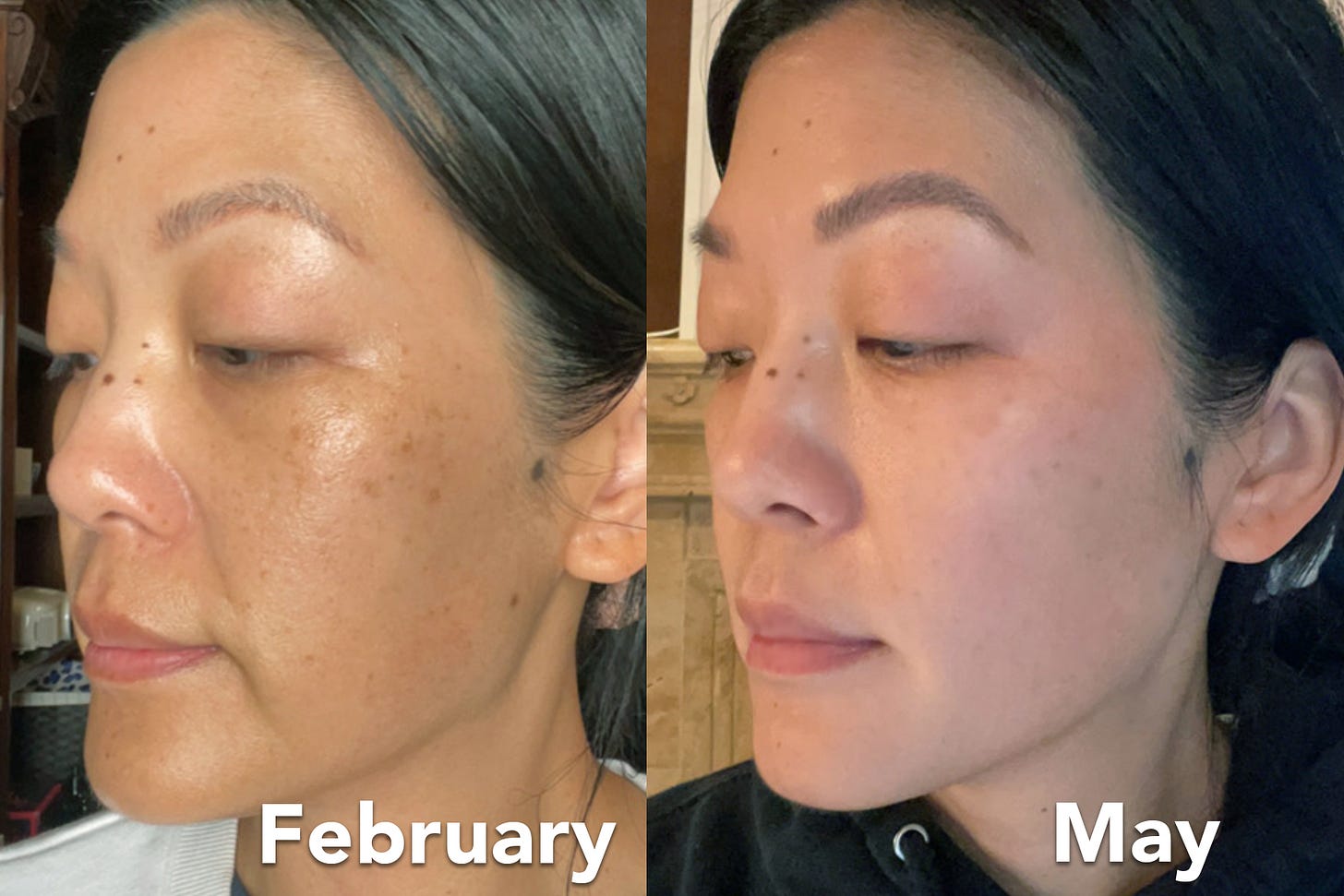
As I mentioned in my previous story about sunscreen, I wasn’t always diligent about sun protection. Thanks to genetics, my skin type is extremely prone to hyperpigmentation (super common among us Asian folks). I had some melasma after each of my three pregnancies which basically compounded over time. This last one was a doozy. The wave of hormone changes sparked by my “geriatric pregnancy” (yes, they call it that) seemed to trigger my hyperpigmentation like never before.
Dark Spot Treatments I’ve Tried
While I was Editor in Chief of Allure, I was extremely spoiled and got to try a lot of treatments and products, basically anything I wanted. I realize that it is completely unrealistic for the average person to try everything I have, so I hope I can save you some time.
Fraxel laser: It’s pricey (typically $1,000+ for one treatment; and you may need more than one). And it’s not for the faint of heart. Even with numbing cream, you do feel a sharp zing at times; and there is some downtime. You’ll look red and swollen for the first day, then over next 7 to 10 days, you’ll molt like a snake, which is kind of gross but also kind of satisfying. It didn’t really do much to fade my dark spots but my skin looked plump and glowing after the first week of recovery.
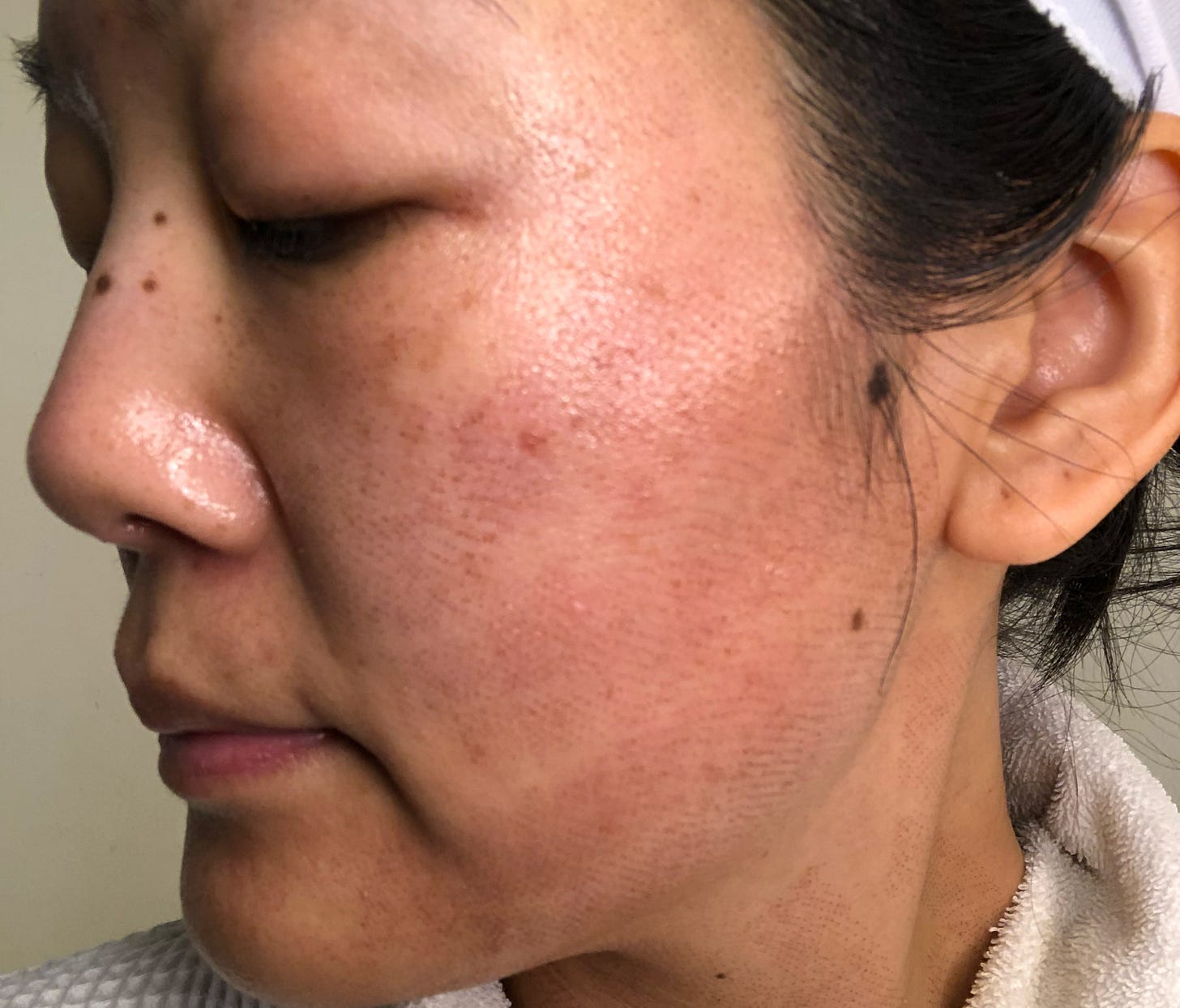
Vitamin C serums: I totally believe in daily Vitamin C to help keep your skin in bouncy, healthy shape. I have not, however, found it to be a magic bullet when it comes to dark spots. But, yes, do use them because they contribute to your overall skin health.
READ: My Hair, a Tragic Love Story
Red light: There are some red light LED masks that claim to help with hyperpigmentation. To be honest, I don’t think there’s enough research either way to say. A few scientists messaged me to say it’s possible red light could actually have the opposite effect and might make hyperpigmentation worse but we just don’t know yet. I personally don’t want to risk it so I paused on red light for the moment. They’re great for folks who don’t have dark spots though since they help promote collagen production.
A gazillion dark spot corrector creams: I’ll be honest, I think that people with stubborn hyperpigmentation set the bar pretty low. We’ll stick with a product for months and maybe see the tiniest improvement and be like, oh, maybe it’s doing something. I’m sorry to say: there’s a lot out there that just doesn’t work.
READ: My Favorite Sunscreens and a Word on Dark Spots, My Old Enemy
Microneedling: Maybe I’m just lazy but I couldn’t stick with a regular routine of at-home dermarolling—plus, it doesn’t really penetrate deeply enough to make a huge difference. And keeping everything totally sterile felt daunting. I did, however, really like professional microneedling. My treatment used a device called the Dermapen, which creates micro-injuries in the epidermis and dermis to encourage the skin to heal itself. I swear I don’t have a pain kink but for some reason, I declined numbing cream. Big mistake. Take the numbing cream. It hurt so much, especially on bony parts. It’s $200-$800 depending on where you live. Similar to Fraxel, my skin looked glowy and fresh a few weeks after. But it also didn’t do a huge amount for my dark spots. (In fairness, most pros say you need about three sessions and I only did one.)
What Finally Moved the Needle
It’s totally natural that we all want to try the least invasive, most organic treatments first. But for really stubborn skin conditions, it sometimes requires medical intervention. I had tried, and failed, so many times—I finally decided to go the prescription route. I’m talking tretinoin and hydroquinone.
Even if you’re new to skin care, you probably know about retinol. Tretinoin is in the same family as retinol but it’s way more powerful and Rx-only. Into our 20s, our skin cells turn over at a pretty rapid rate. But that starts to slow down dramatically as we age. So any damage, caused by sun, lifestyle, environment, life in general, will show and just stay there. Tretinoin speeds up cell turnover.
READ: 7 Greatest Lipsticks Ever—and 3 That Didn't Work Out
Hydroquinone, on the other hand, inhibits melanin production (the cause of dark spots). Many dermatologists see it as the gold standard ingredient for melasma and hyperpigmentation. It has had some controversy in recent years, however. One reason: in very rare cases, patients can experience the opposite of what they’re looking for and develop a stubborn bluish discoloration. There’s also concern that it could raise the risk of skin cancer by degrading melanin pigments. But with diligent sun protection (wear sunscreen every day, people!), medical supervision and proper use (not using it for longer than three to six months), potential risks can be greatly reduced.
I bought my tret and hydroquinone from Musely, which they call their Anti-Aging Cream and their Spot Cream. (Here’s a story from Harvard Medical School if you want to go deeper on melasma.)
It’s telehealth so you get the prescription from a Board-certified dermatologist who guides you through the process. I started with the Spot Cream first but the results really accelerated after I started using the Anti-Aging Cream on top of it. Basically, the tretinoin speeds up cell turnover and sloughs off the top layer of dead skin so it expedites the whole process.
A few words of warning: I overdid it at first. I thought that because I was a veteran retinol user that I could leap-frog up to the highest percentage of tretinoin. Hoo, boy, was I wrong. Tretinoin is no joke. It is a super powerful Rx ingredient that will fuck you up if you don’t take it gradually. It may not happen until a few days after use, but you will be red, irritated, and peeling if you take things too quickly. Fortunately, Musely adds other ingredients which makes their tret more tolerable and there’s lots of info online about buffering tret. Here’s what worked for me:
Cleanse face and let it dry for 5 minutes (prescription skin care needs to go on dry skin)
Apply one pump of the Spot Cream. Wait 5 minutes
Apply a layer of Cerave Moisturizing Cream. Wait a few minutes
Apply one pump of the Anti-Aging Cream only on affected areas. Wait a few minutes
Apply more Cerave, La Roche Posay Cicaplast or Ole Henriksen Strength Trainer Moisturizer
Most importantly, don’t feel like you have to use tret every night. It’s totally ok to just keep it to a few nights a week or whatever your skin can tolerate
Wear sunscreen daily and reapply every 2 hours
Following that routine for a few months made the biggest difference on my dark spots that I’ve ever seen. I’ll take a break for a few months though because I don’t want to risk side effects (from the hydroquinone). And I’ll use other OTC products in the meantime. Oh my god, friends, I could go on forever but Substack is telling me I’m nearing my length limit. I think I’ll need to do a Dark Spots Part 2! (Also, there’s a new product that I got a sneak peek of that I can’t wait to share.) In the meantime…
More Dark Spot Favorites From People Who Know
“My favorite I’m using right now since I got back from Mexico is the Pillowtalk Derm Major Fade Hyper Serum. I actually use this all over my face to treat and brighten. I use that first and then the Tatcha Indigo cream afterwards to hydrate and calm.”
—Daniel Martin, makeup artist
RELATED: Your Biggest Dark Spot Questions, Answered
“My Favorite Way to treat I hyperpigmentation is to use the Relevant: Your Skin Seen - Sol Tone Resurface & Glow solution. This resurfacing solution features an exclusive 5-acid blend to whisk away dullness, refine texture, and even out the appearance of discoloration and dark spots.”
—Nyakio Grieco, co-founder of Thirteen Lune and Relevant Skin
“My all time favorite ingredient to combat hyperpigmentation and dark spots is azelaic acid! I bow to it for its skin calming and tyrosinase inhibiting properties. I’ve tried a bunch of azelaic products on the market but this one gave me a noticeable radiance in my complexion. The formula is really elegant and approachable for different skin types—this Dr. Sam Bunting one has bakuchiol, a retinol alternative. And as an added bonus, I had less blackheads on my nose too.”
—Jenny Qian, founder of Iris
“CosmelanMD peel. This is the gold standard for deep pigmentation and melasma. It suppresses melanocyte activity as it exfoliates to lift discoloration from the skin and unify the complexion.”
—Candace Marino, the LA Facialist
Should I make dark spots a recurring topic in this newsletter? There’s so much to discuss! Let’s keep the conversation going in the comments….ask away! [UPDATE: I wrote a part 2 for dark spots. Read it here!]
Your Biggest Dark Spot Questions, Answered
I couldn’t cover everything in last week’s dark spots story so for part 2, we’re answering some burning hyperpigmentation questions, including: Is tretinoin really that much better than retinol? I’m scared of the retinoid uglies: Will skin cycling help?
Disclosures: I earn a small percentage from affiliate revenue when you purchase some of the products mentioned. I have done some consulting work with Musely in the past but this is not a sponsored story—truly just sharing how tretinoin and hydroquinone have worked for me. And you can, and should, always consult a Board-certified dermatologist to see what’s right for you.





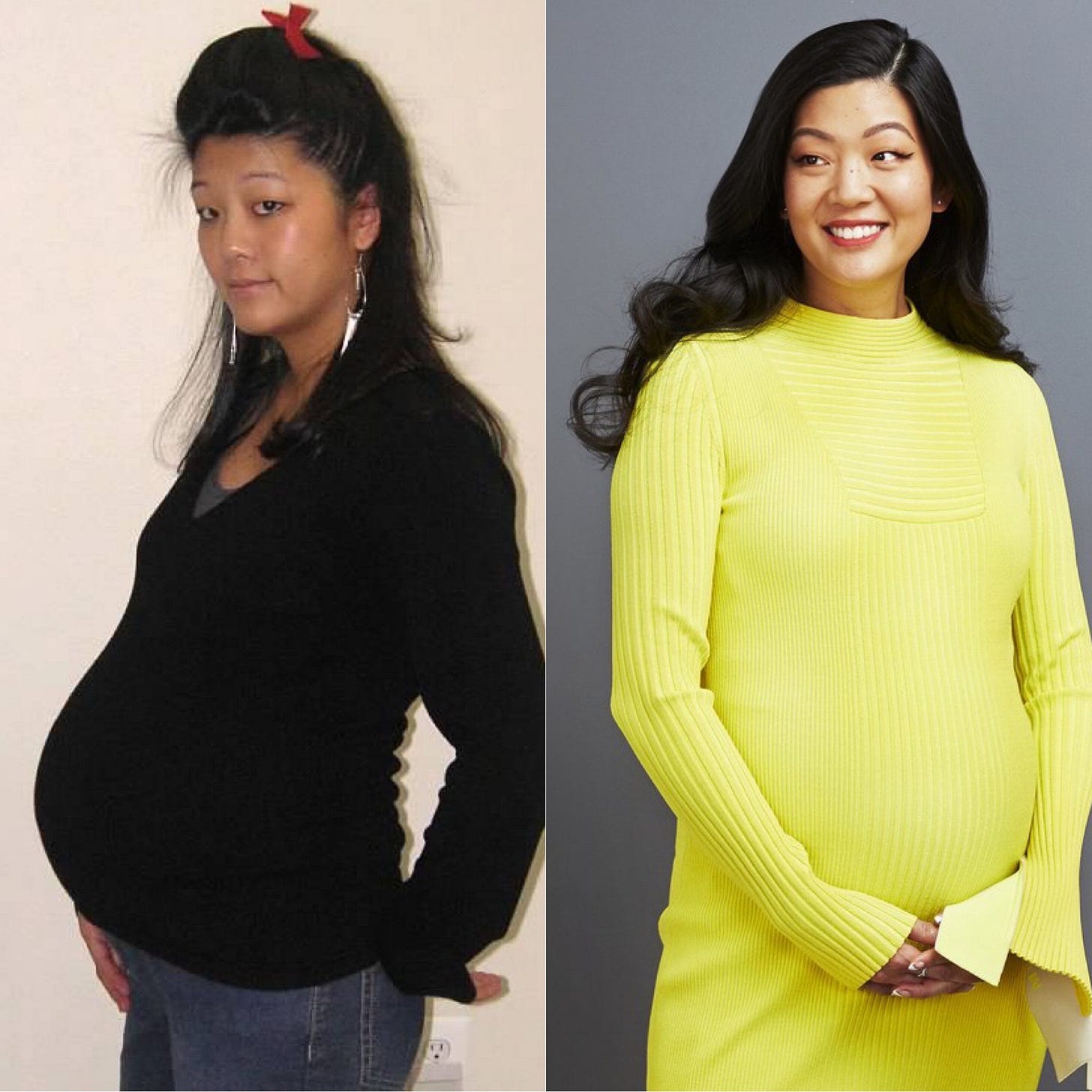
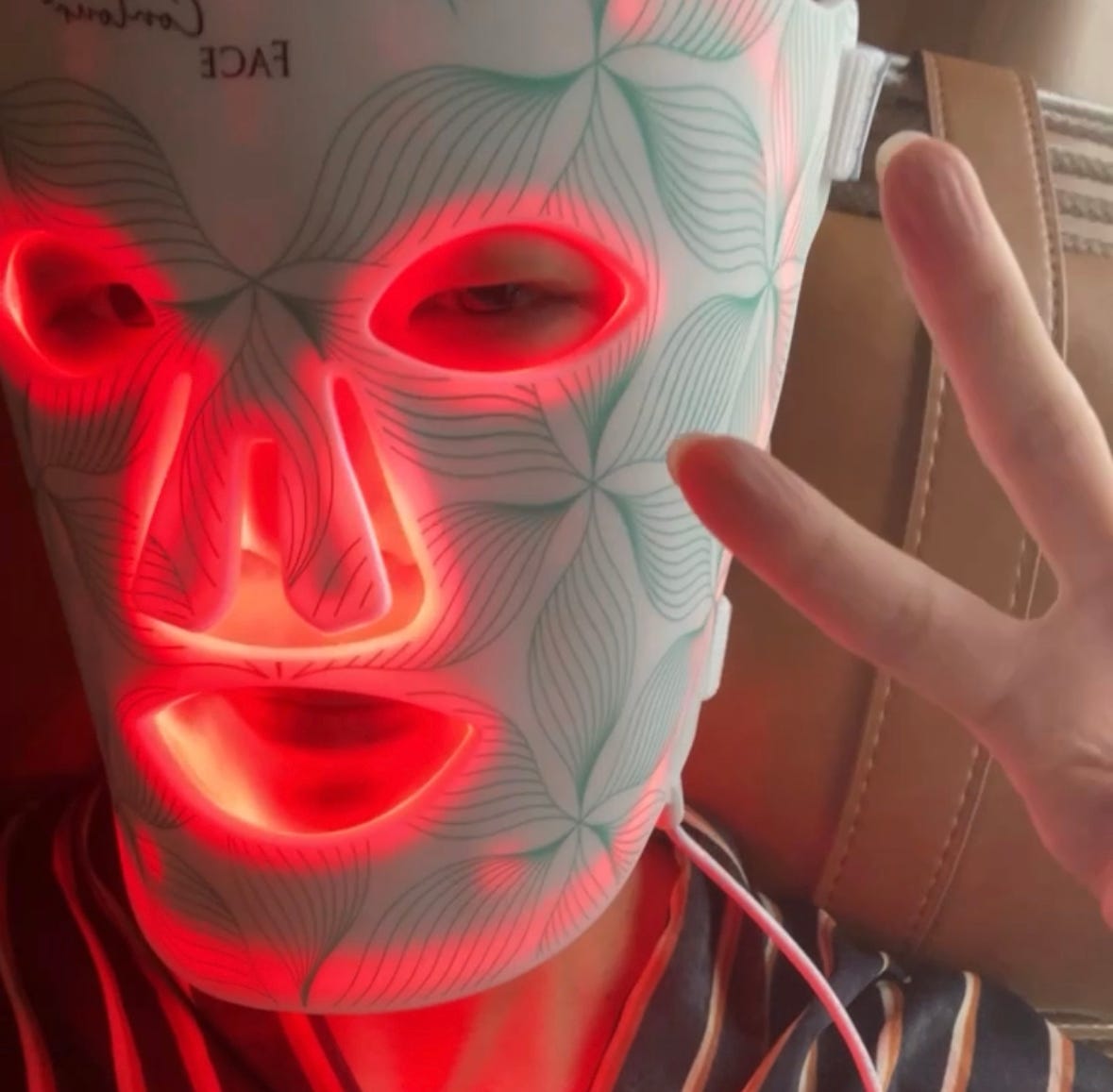

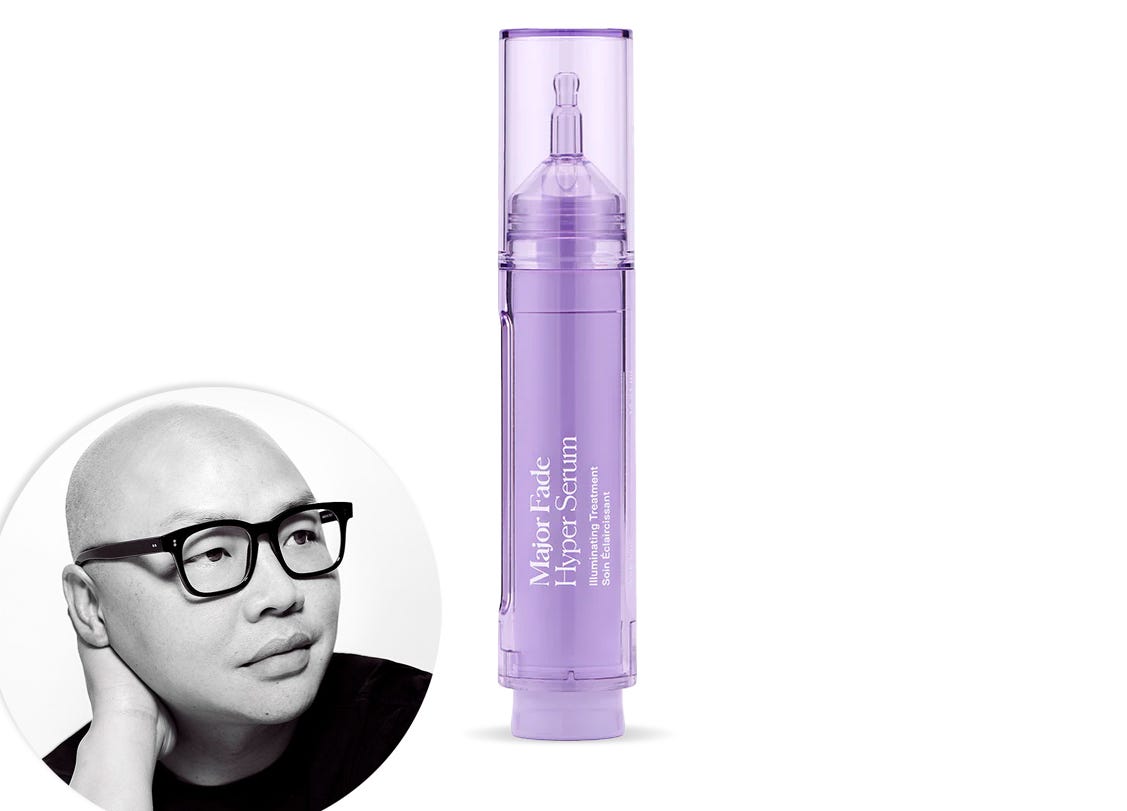

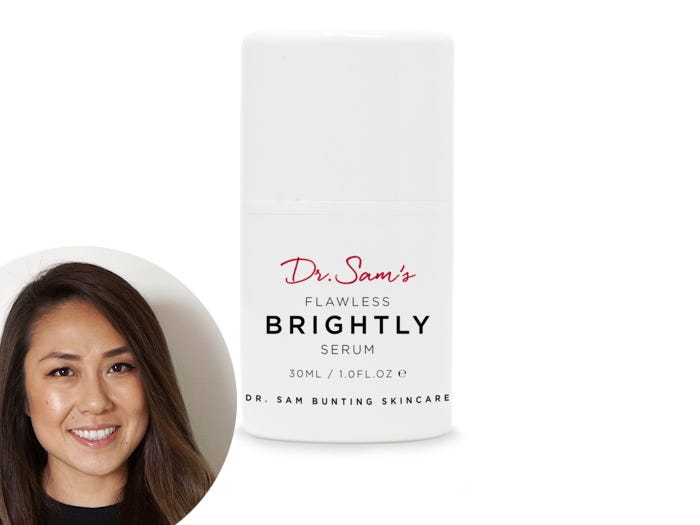
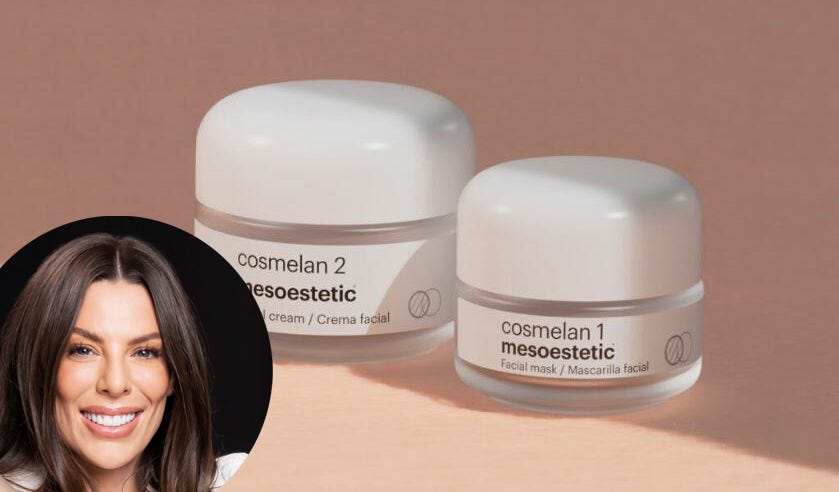

I may have to try tret. I’ve been using retinal, but eventually I’m going to need something stronger.
I am going to try this from Musely. I have been trying endless amounts of creams because I'm too chicken to do lasers!